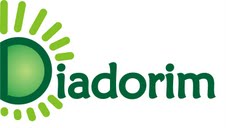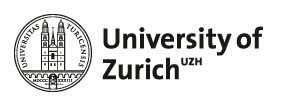The onset in modern Angolar
DOI:
https://doi.org/10.11606/issn.2176-9419.v26i2p309-327Keywords:
Syllable onset, Angolar, Syllable Theory, São Tomé and PríncipeAbstract
Angolar is one of the autochthonous languages of the Republic of São Tomé and Príncipe. This study aims to describe the syllable onset in Angolar, based on Syllable Theory (Selkirk, 1982). As for the corpus, we analyzed 1524 items collected in 2014 and in 2018 in São Tomé and Príncipe, based on recordings with bilinguals (speakers of Angolar as their mother tongue and Portuguese as their second language). Using the Dekereke software (Casali, 2022), we detected the following structures: V, CV, CGV, CCV, CVC, VC and VG. In syllable onset, one or two consonants are legal. This can generate a simple onset (C) or a complex C1C2 sequence with the following configurations: 1) C1 may be an obstruent (b, p, t, d, k, g, f, v) followed by C2 (l, ɾ); 2) C1 may be a consonant (b, p, t, d, k, g, f, v, s) followed by G (w, j). Word-initial nasals followed by obstruents were considered pre-nasalized stops, consisting of a single contour segment in onset position. Furthermore, we highlight that syllable onsets in Angolar follow the Sonority Sequence Principle, as its elements increase in sonority up to the syllable nucleus: C1C2 (0 > 2); and C1G (0 >3).
Downloads
References
Agostinho AL. Fonologia e método pedagógico do lung’Ie [tese]. São Paulo: Faculdade de Filosofia, Letras e Ciências Humanas, Universidade de São Paulo; 2015.
Agostinho AL. Fonologia do lung’Ie. München: Lincom Studies in Pidgin and Creole Linguistics. (15); 2016.
Araujo G, Agostinho AL. Fa do Vesu, a language game of Fa d’Ambô. PAPIA. 2014;24(2):265-281.
Balduino AM. Fonologia do português de São Tomé e Príncipe [tese] São Paulo: Faculdade de Filosofia, Letras e Ciências Humanas, Universidade de São Paulo; 2022.
Bandeira M. Reconstrução fonológica e lexical do protocrioulo do Golfo da Guiné [tese]. São Paulo: Faculdade de Filosofia, Letras e Ciências Humanas, Universidade de São Paulo; 2017.
Bandeira M, Agostinho AL, Freitas S. Aspectos fonético-fonológicos do angolar moderno. Alfa. 2021;65:1-31.
Bisol L. A sílaba e seus constituintes. In: Abaurre MB, organizadora. A construção da palavra fonológica. São Paulo: Contexto; 2013. p. 21-52.
Blevins J. The syllable in phonological theory. In: Goldsmith J, editor. Handbook of phonological theory. Nova Jersey: Wiley-Blackwell Publishing; 1995. p. 206-244.
Boersma, P., Weenink D. Praat: doing phonetics by computer. 1 jan 2022.
Casali R. Dekereke Phonology Software Tool. 24 nov 2022. Disponível em: https://casali.canil.ca/Dekereke/.
Ceita MN. Ensaio para uma reconstrução histórico-antropológica dos angolares de S. Tomé [trabalho de conclusão de curso]. Lisboa: Centro de Estudos Africanos, Instituto Universitário de Lisboa; 1991.
Clements GN. The role of the sonority cycle in core syllabification. In: Kingston J, Beckman ME, editores. Papers in laboratory phonology I: between the grammar and physics of speech. Cambridge: Cambridge University Press; 1990. p. 283-333.
Clements GN, Hume E. The internal organization of speech sounds. In: Goldsmith J, editor. Handbook of phonological theory. Nova Jersey: Wiley Blackwell Publishing; 1995. p. 245-306.
Clements GN, Keyser SJ. CV phonology: a generative theory of the syllable. Cambridge: MIT Press; 1983.
Collischonn G. A sílaba em português. In: Bisol L. (Org.). Introdução a Estudos de fonologia do português brasileiro. Porto Alegre: EDIPUCRS, 1999. p. 101-129.
Damulakis GN. Sequenciamento de sonoridade e contorno nasal em línguas Macro-Jê. Revista de Estudos da Linguagem. 2010;18(1):35-49.
Ferraz LI. A Linguistic Appraisal of Angolar. Memoriam Antônio Jorge Dias. 1974, v. 2: p. 177-186.
Hagemeijer T. Initial vowel agglutination in the Gulf of Guinea creoles. In: Aboh E, Smith N, editores. Complex processes in new languages. Amsterdam/Filadélfia: John Benjamins Publishing Company; 2009. p. 29-50.
INE. Recenseamento Geral da População e da Habitação: Características Educacional da População. São Tomé: INE; 2013.
Ladefoged P, Maddieson I. The sounds of the world’s languages. Londres: Blackwell; 1996.
Lorenzino G. The Angolar Creole Portuguese of São Tomé: its grammar and sociolinguistic history. Munich: Lincom Europa; 1998.
Mapmaker Interactive. MapMaker Launch Guide [homepage]. 2024. Disponível em: http://mapmaker.nationalgeographic.org/.
Maurer P. L’apport lexical bantou en angolar. Afrikanische Arbeitspapiere (Köln). 1992;29:163-174.
Maurer P. L’angolar. Un créole afro-portugais parlé à São Tomé. Hamburg: Buske; 1995.
Maurer P. Angolar. In: Michaelis SM, et al. The survey of pidgin and creole languages. Oxford: Oxford University Press; 2013.
Murray RW.; Vennemann T. Sound Change and Syllable Structure in Germanic Phonology. Language. 1983;59(3):514-528.
Ramos AP, Tenani LE. Análise métrica do apagamento das vogais postônicas não finais no dialeto do noroeste paulista. Estudos Linguísticos. 2009;38(1):21-34.
Selkirk E. The syllable. In: Hulst HVD, Smith N, editores. The structure of phonological representations: Part 2. Dordrecht: Foris; 1982. p. 337-384.
Selkirk E. Phonology and syntax: the relation between sound and structure. Cambridge: MIT Press; 1984.
Zec D. The syllable. In: Lacy, P, editor. The Cambridge handbook of phonology. Cambridge: Cambridge University Press; 2006. p. 161-193.
Downloads
Published
Issue
Section
License
Copyright (c) 2024 Ubiratã Kickhöfel Alves, Manuele Bandeira

This work is licensed under a Creative Commons Attribution-NonCommercial 4.0 International License.
Copyright is transferred to the journal for the online publication, with free access, and for the printing in paper documents. Copyright may be preserved for authors who wish to republish their work in collections.






















